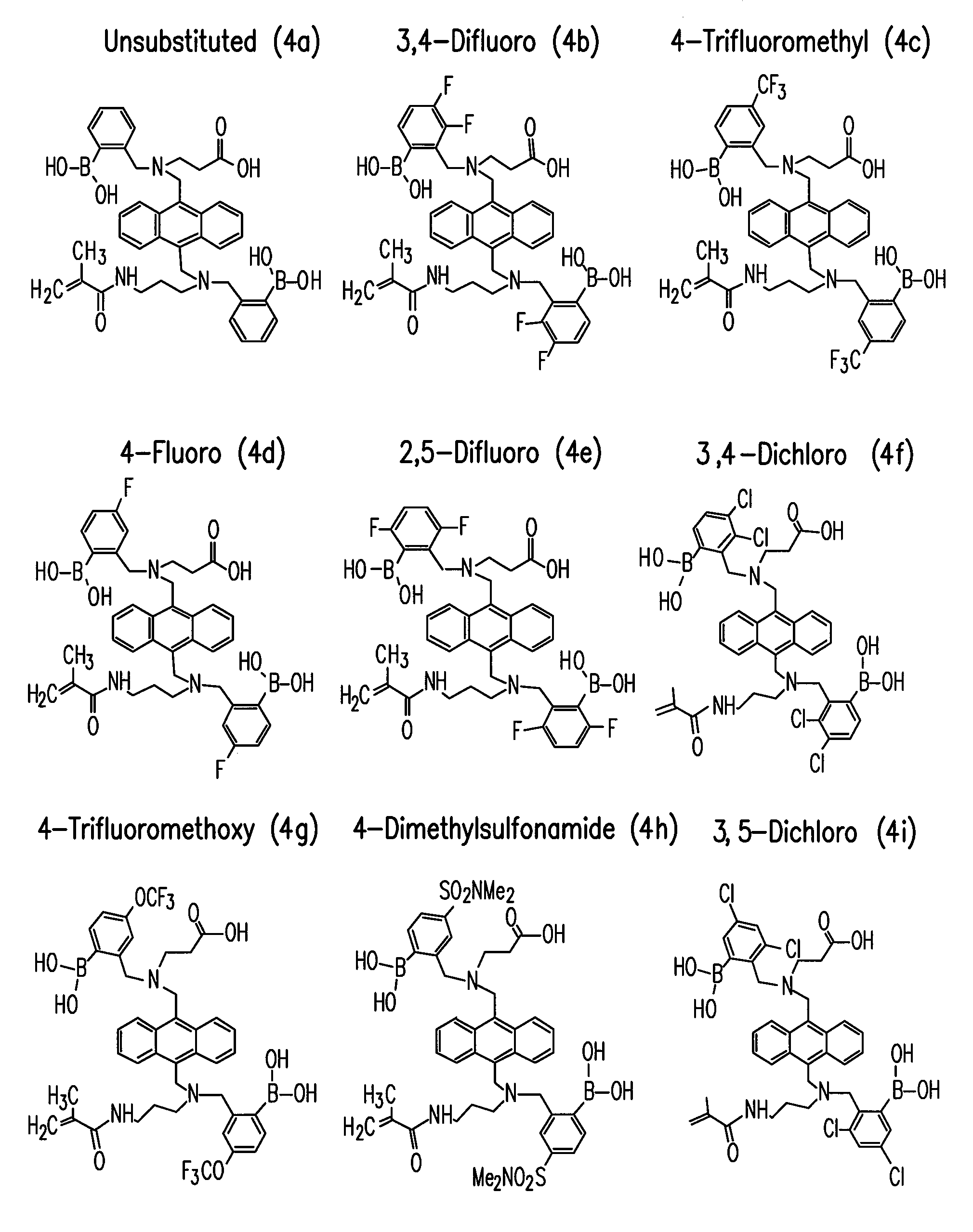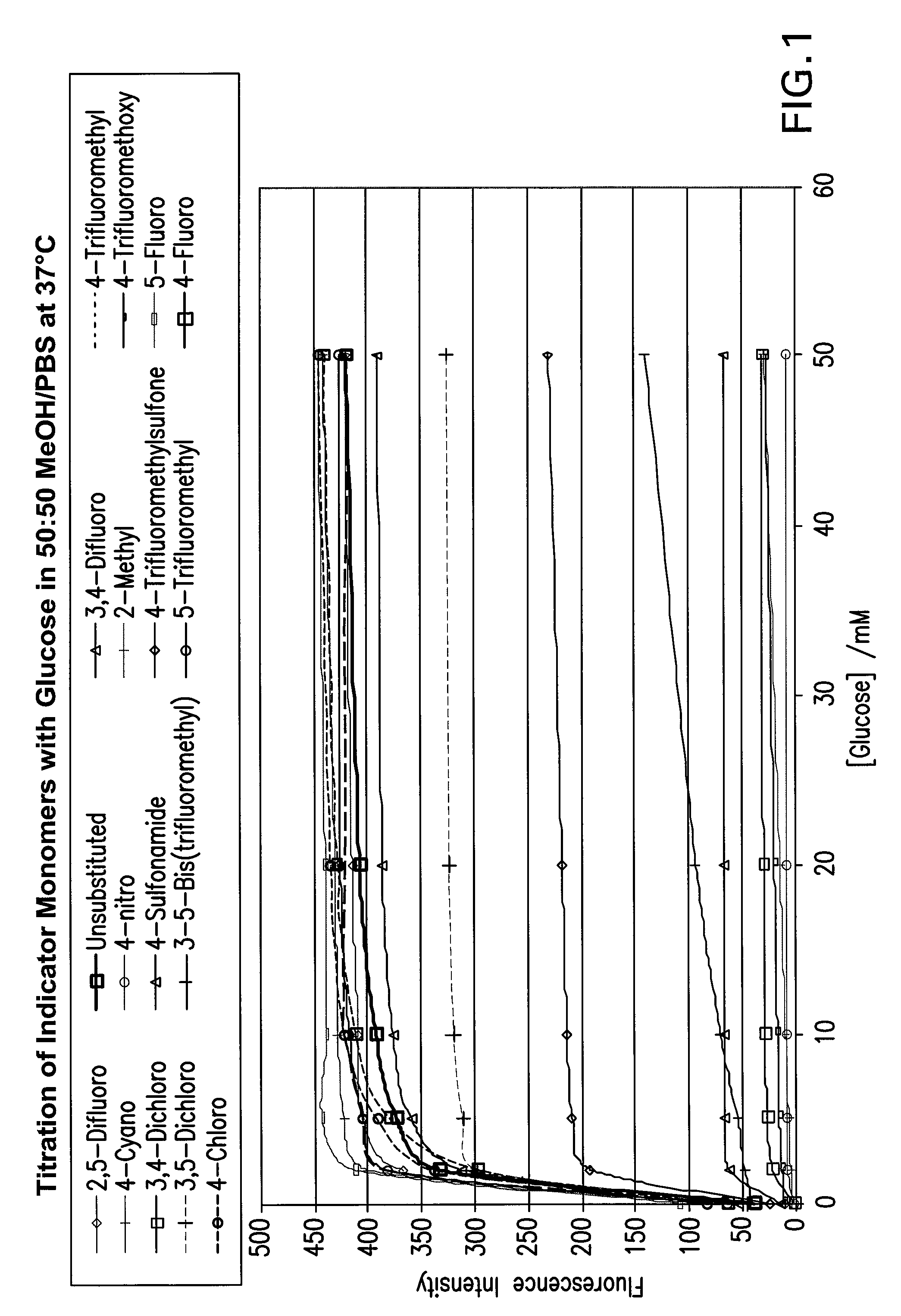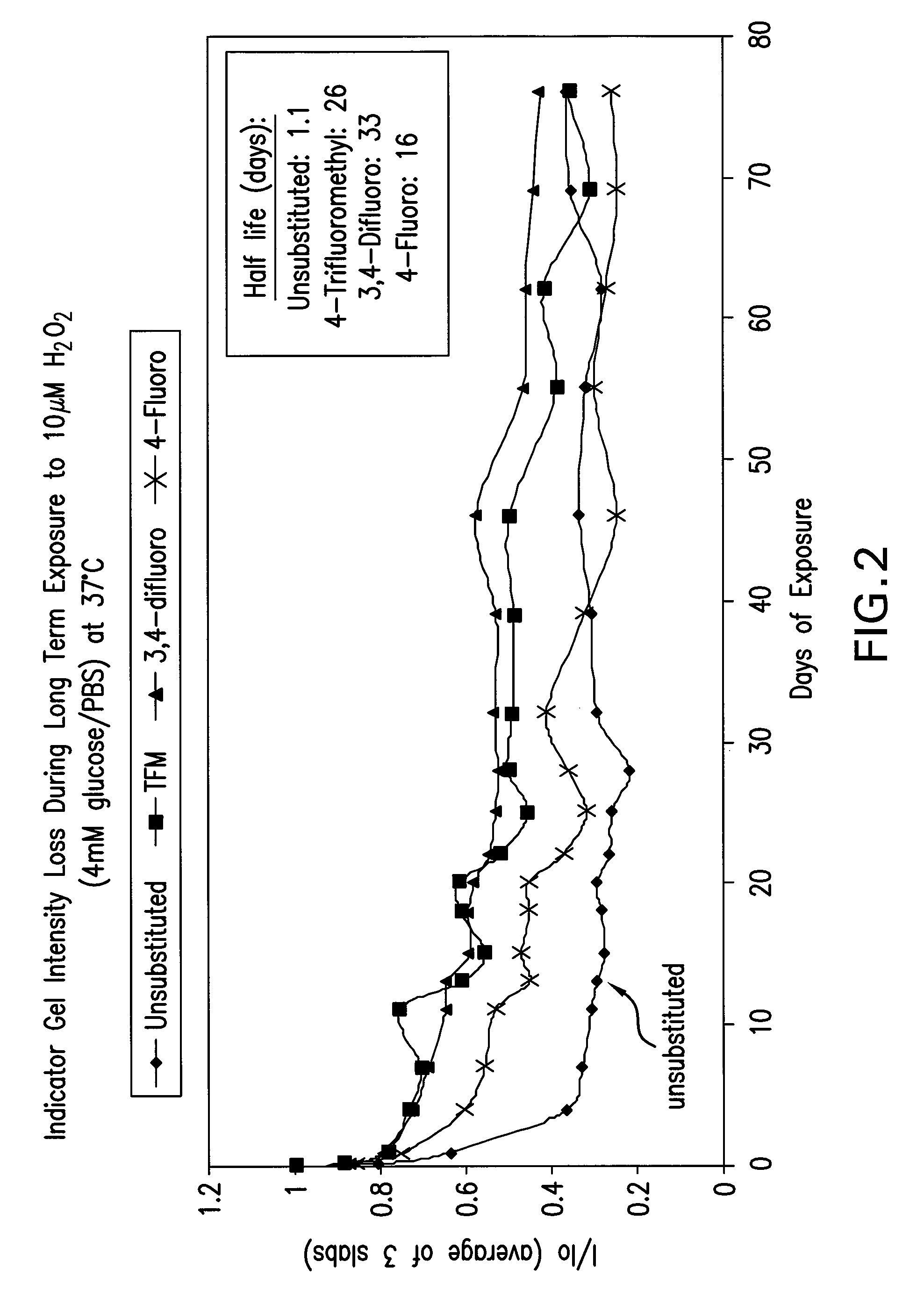Oxidation resistant indicator molecules
a technology of indicator molecules and fluorescent molecule, which is applied in the direction of fluorescence/phosphorescence, group 313 element organic compounds, instruments, etc., can solve the problems of oxidation resistance, loss of fluorescence intensity, and loss of oxygen species or oxygenase activity of fluorescent molecules, so as to achieve enhanced oxidation resistance
- Summary
- Abstract
- Description
- Claims
- Application Information
AI Technical Summary
Benefits of technology
Problems solved by technology
Method used
Image
Examples
example 1
[0098]The modulation of the fluorescence of various molecules (depicted in FIG. 5) by varying concentrations of glucose was determined. The results are set forth in FIG. 1, and show that most of the molecules tested modulated well. Two of the molecules (the 4-nitro and 2-methyl substituted compounds) did not modulate well, but still are useful as oxidation-resistant tags. In a further experiment, the unsubstituted control and two compounds of the present invention (4-trifluoromethyl and 3,4-difluoro) were subjected to oxidation treatment with 1 mM hydrogen peroxide, and the loss of fluorescence intensity was measured. Those data are shown in FIG. 3.
example 2
[0099]Several gels (produced as in Example 3) containing compounds of the present invention (4-trifluoromethyl, 3,4-difluoro and 4-fluoro) and a control (unsubstituted) were subjected to long term exposure to 10 μM hydrogen peroxide and 4 mM glucose / PBS at 37° C., and the loss of fluorescence intensity was measured. Those data are shown in FIG. 2. In addition, the measured in vitro half life data for three of the compounds are set forth in Table 1 below.
[0100]The data in the table show that, as compared with the standard unsubstituted monomer, the 3,4-difluoro and the 4-trifluoromethyl analogs have approximately 33 and 26 times longer half life, respectively, in the presence of 10 μM hydrogen peroxide. For comparison, literature reports that typical physiological hydrogen peroxide levels are approximately 0.5 μM maximum. Also notable from the table are the differences in average fluorescence intensity. Both analogs show lower overall modulation, but substantially greater fluorescenc...
example 3
[0102]Two compounds according to the present invention (4-trifluoromethyl and 3,4-difluoro) and the unsubstituted control were each copolymerized with hydroxyethyl methacrylate (HEMA) and acrylic acid, and crosslinked with ethylene glycol dimethacrylate (EGDMA) to form a water insoluble polymer graft, which was then implanted into a rat to be subjected to in vivo oxidation for 22 or 43 days. Upon explant, the fluorescence of each compound was measured, and the data are shown in FIG. 4. The compounds of the present invention retained greater fluorescence compared to the control.
PUM
| Property | Measurement | Unit |
|---|---|---|
| pH | aaaaa | aaaaa |
| temperature | aaaaa | aaaaa |
| temperature | aaaaa | aaaaa |
Abstract
Description
Claims
Application Information
 Login to View More
Login to View More - R&D
- Intellectual Property
- Life Sciences
- Materials
- Tech Scout
- Unparalleled Data Quality
- Higher Quality Content
- 60% Fewer Hallucinations
Browse by: Latest US Patents, China's latest patents, Technical Efficacy Thesaurus, Application Domain, Technology Topic, Popular Technical Reports.
© 2025 PatSnap. All rights reserved.Legal|Privacy policy|Modern Slavery Act Transparency Statement|Sitemap|About US| Contact US: help@patsnap.com



